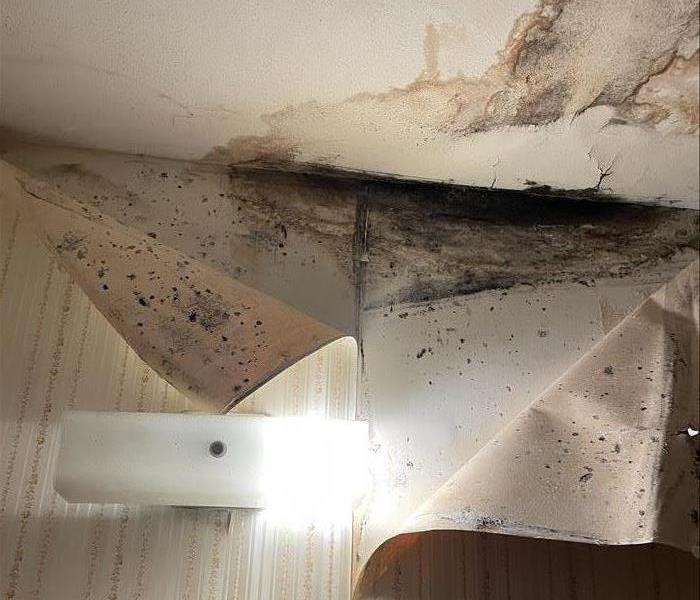Mold and Indoor Plants: Expert Tips for Keeping Your Greenery Mold-Free
11/13/2024 (Permalink)
 Thankfully, with proper care and some expert tips, you can keep your indoor plants mold-free and thriving.
Thankfully, with proper care and some expert tips, you can keep your indoor plants mold-free and thriving.
Indoor plants bring a sense of peace and beauty into any home or office in Sicklerville, NJ, improving air quality and offering a calming environment. However, mold growth on and around plants can quickly tarnish their appeal and even lead to long-term maintenance issues for your home. If you've noticed mold forming in your indoor garden, you're not alone. Mold thrives in warm, moist environments, making indoor plants a common hotspot. Thankfully, with proper care and some expert tips, you can keep your indoor plants mold-free and thriving.
Why Mold Grows on Indoor Plants
Mold on indoor plants is often the result of excessive moisture. Overwatering, poor ventilation, and inadequate light conditions create the perfect environment for mold spores to settle and grow. Mold tends to thrive in damp soil or on plant surfaces where humidity levels are high. While mold doesn't harm the plant in small quantities, it can still be an unsightly issue and a sign that care practices need to be adjusted.
Did you know that mold can start to grow within 24 to 48 hours in the right conditions? According to the Environmental Protection Agency (EPA), controlling moisture is the key to preventing mold growth indoors. This same principle applies when caring for indoor plants. Learn more about mold and moisture control.
Tips for Keeping Your Indoor Plants Mold-Free
Maintaining mold-free indoor plants is all about creating the right environment and care routine. Here are some expert tips that will help keep mold at bay while ensuring your plants continue to thrive:
1. Monitor Watering Habits
Overwatering is one of the leading causes of mold growth in indoor plants. Mold loves soggy, waterlogged soil. To prevent this:
- Allow the top layer of soil to dry out before watering again.
- Use pots with proper drainage holes to allow excess water to escape.
- Avoid letting your plants sit in standing water in saucers or trays.
2. Ensure Proper Air Circulation
Good airflow can help dry out excess moisture and discourage mold growth.
- Place your plants in areas with good ventilation.
- Use fans or open windows to promote better air circulation in rooms with high humidity levels.
3. Provide Adequate Lighting
Mold thrives in dark, damp spaces. Ensure your plants receive the right amount of sunlight.
- Place plants near windows or use grow lights for additional lighting.
- Rotate plants regularly to ensure even light distribution, which helps prevent mold from forming on the shaded side of the plant.
4. Use Well-Draining Soil
Soil that holds too much water creates the perfect environment for mold. Use a soil mix that drains well to avoid waterlogging.
- Consider adding perlite, sand, or bark to the soil to improve drainage.
- Repot your plants if necessary, replacing old, soggy soil with fresh, well-draining mix.
5. Remove Dead Plant Material
Dead leaves or plant debris can trap moisture and encourage mold growth.
- Regularly prune dead or decaying leaves and stems from your plants.
- Keep the soil surface clean by removing any fallen plant matter.
6. Treat Mold Early
If you notice mold beginning to form, treat it right away before it spreads.
- Scrape off any visible mold from the soil's surface.
- Wipe down plant leaves with a mixture of water and mild dish soap to remove surface mold.
- Use a natural fungicide, like neem oil, to treat persistent mold problems without harming your plants.
Additional Considerations for a Mold-Free Indoor Garden
Prevention is key to keeping mold away from your indoor plants. In addition to the tips above, consider the following:
- Use a dehumidifier: If your home tends to be humid, consider using a dehumidifier in rooms where your plants are located to reduce moisture levels.
- Choose the right plants: Some plants, such as succulents, require less water and are less prone to mold growth compared to moisture-loving plants like ferns.
Conclusion
Keeping your indoor plants mold-free is not only achievable but essential for their long-term health. By following these expert tips—adjusting watering habits, improving ventilation, and staying vigilant with plant care—you can enjoy a lush, vibrant indoor garden without the worry of mold growth. Remember, the key to a healthy indoor garden is a balance between moisture, light, and airflow. Take the time to maintain that balance, and your plants will reward you with their beauty and vitality.
At SERVPRO®, we understand the importance of preventing mold growth in every part of your home, including your indoor garden. Stay proactive, and keep your indoor greenery mold-free all year round!




 24/7 Emergency Service
24/7 Emergency Service